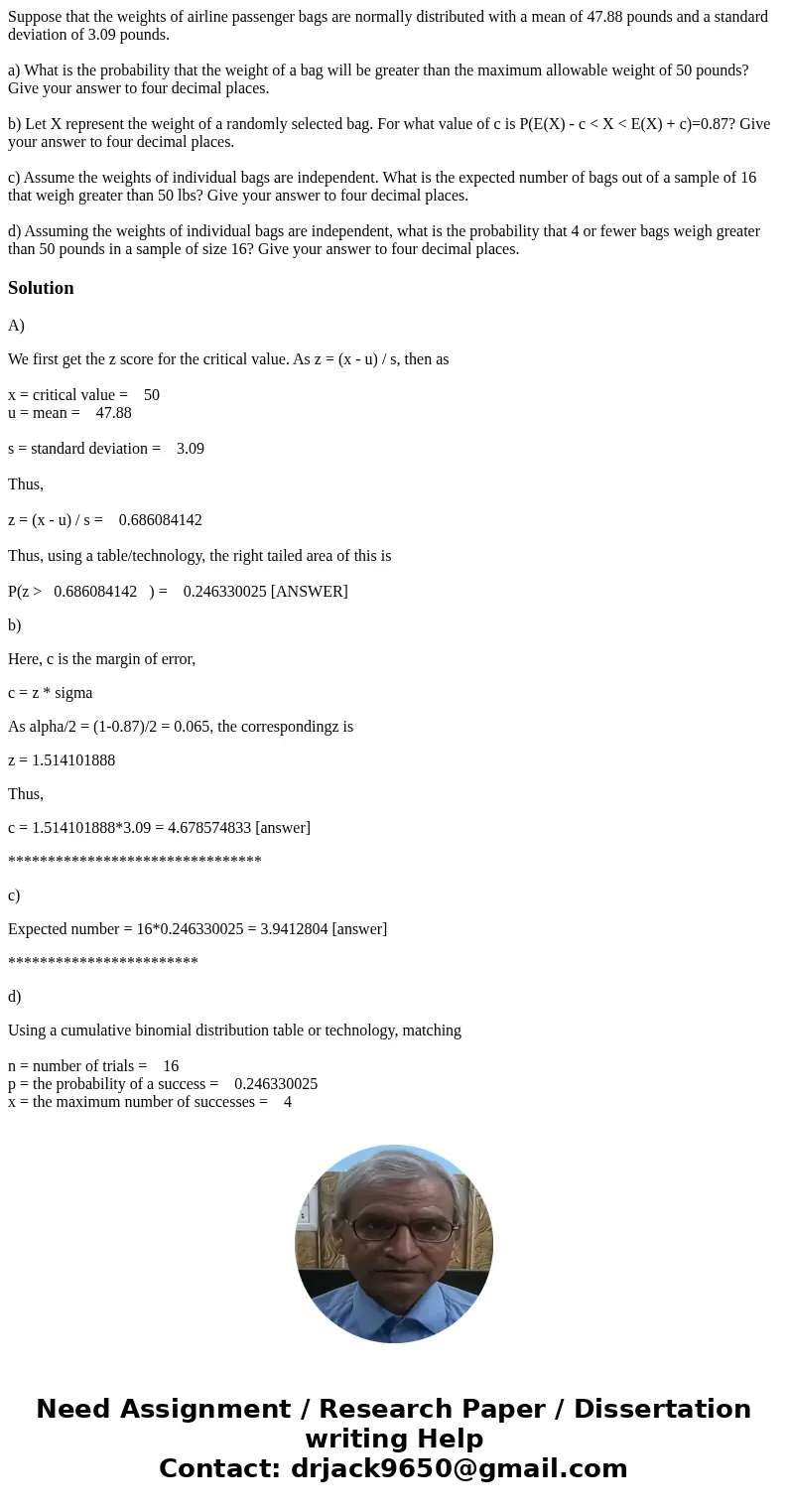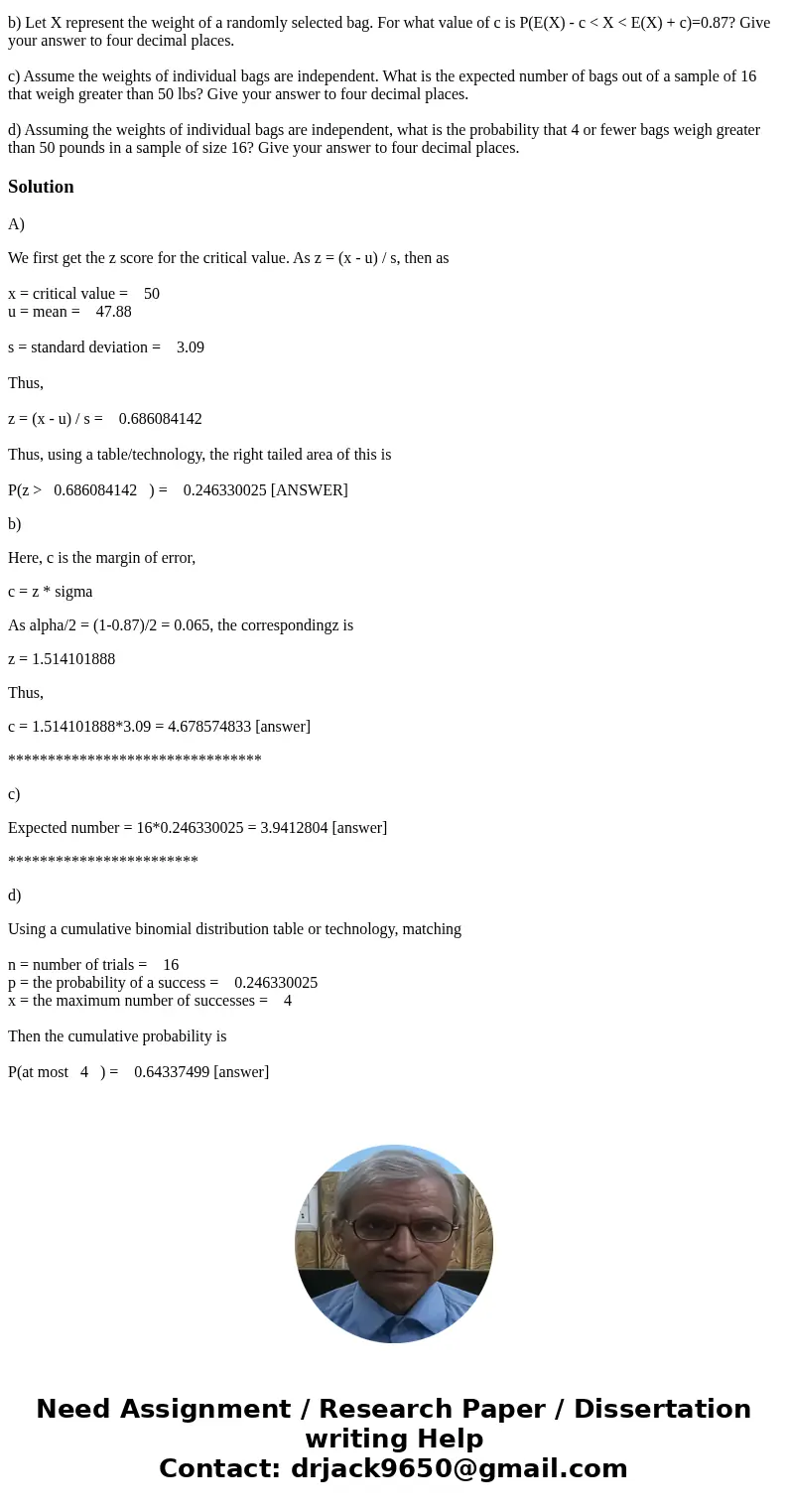Suppose that the weights of airline passenger bags are norma
Suppose that the weights of airline passenger bags are normally distributed with a mean of 47.88 pounds and a standard deviation of 3.09 pounds.
a) What is the probability that the weight of a bag will be greater than the maximum allowable weight of 50 pounds? Give your answer to four decimal places.
b) Let X represent the weight of a randomly selected bag. For what value of c is P(E(X) - c < X < E(X) + c)=0.87? Give your answer to four decimal places.
c) Assume the weights of individual bags are independent. What is the expected number of bags out of a sample of 16 that weigh greater than 50 lbs? Give your answer to four decimal places.
d) Assuming the weights of individual bags are independent, what is the probability that 4 or fewer bags weigh greater than 50 pounds in a sample of size 16? Give your answer to four decimal places.
Solution
A)
We first get the z score for the critical value. As z = (x - u) / s, then as
x = critical value = 50
u = mean = 47.88
s = standard deviation = 3.09
Thus,
z = (x - u) / s = 0.686084142
Thus, using a table/technology, the right tailed area of this is
P(z > 0.686084142 ) = 0.246330025 [ANSWER]
b)
Here, c is the margin of error,
c = z * sigma
As alpha/2 = (1-0.87)/2 = 0.065, the correspondingz is
z = 1.514101888
Thus,
c = 1.514101888*3.09 = 4.678574833 [answer]
********************************
c)
Expected number = 16*0.246330025 = 3.9412804 [answer]
************************
d)
Using a cumulative binomial distribution table or technology, matching
n = number of trials = 16
p = the probability of a success = 0.246330025
x = the maximum number of successes = 4
Then the cumulative probability is
P(at most 4 ) = 0.64337499 [answer]


 Homework Sourse
Homework Sourse